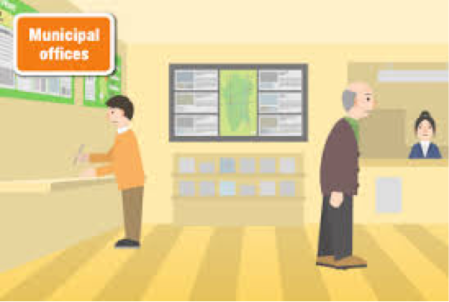
Municipalities serve the residents and businesses that make up their community.
Safety, recreation, public transit, roads, social services, parking, water service and drainage are top of the list of ratepayer services. Many of these apply digital signage within departmental budgets to provide public information, while others such as transit, recreation, art and parking infrastructure use the medium to generate non-tax revenues.
Municipalities also want to attract visitors, new residents and businesses that contribute to growth and broaden the tax base.
Digital street infrastructure is high on the priority list of municipalities, as several capabilities have converged. Wi-Fi, mobile charging, proximity information caching, wayfinding, alerts, transit information, message and advertisement display and links to mobile phones can draw on the same infrastructure to bring streets, pedestrian areas, as well as shopping, entertainment and tourist districts to life.
New York City has been leading the way but many other cities are moving forward with similar plans. “District Detroit” is a 50-block area being rejuvenated as an area of shopping, sports, live entertainment, hospitality, business and living. The CityScapes of Dallas, anchored by the massive Nebraska Furniture Mart retail outlet is a similar undertaking.
The vitality and service to patrons of annual events such as South by Southwest SXSW in Austin mean that such events can bring significant financial benefit to the community. SXSW contributes over $300 million in economic benefit annually to Austin. Most municipalities have festivals or special events that attract visitors and increase their profile.
Special events that host large numbers of visitors and local participants can offer the focus and funding to enable media infrastructure. The potential for advertisers to align their branding with the spirit of the event is attractive to their branding. Economies are built into message delivery to a large, highly concentrated audience that self-identifies as sharing an interest. Advertising can be highly contextual and very effective at establishing brand awareness and alignment.
Trade show and exhibit producers learned the lesson of digital display revenues years ago. Temporary or trailer-mounted, mobile, large-format LED signs provide a way to assess the impact of digital media during an event while at the same time kick-starting a funding campaign for permanent multi-purpose signs.
Local business operators all have marketing budgets and seek to get the most for their communications investment. The modern appeal of digital signage operating in high traffic areas and engaging consumers with addition service elements allows the advertiser to gain exceptionally good exposure.
The action plan for municipalities related to digital signage should be:
- Have individual departments assess how their service quality, community outreach and goals could be better met by using digital signage.
- Determine locations of high viewership as candidates for installing ad-based digital out-of-home networks.
- Use digital media to bring modern-ness and vitality to areas where more pedestrian traffic and commerce is desired.
- Use festivals and special events to fund digital media infrastructure.
The knowledge gained by one department can be offered to others and the buying power of a broader application can benefit each budget area. The key is to start.
Lyle Bunn is an independent analyst, advisor and educator providing digital place based media subject matter expertise. He has assisted hundreds of organizations, published more than 350 articles, whitepapers and guides and helped to train more than 10,000 professionals. www.LyleBunn.com
You must be logged in to post a comment.